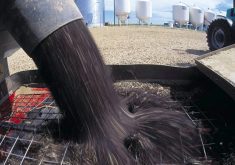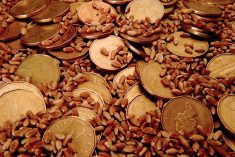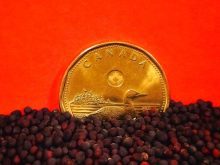CNS Canada — Higher interest rates and a stronger Canadian dollar relative to U.S. currency is giving Canadian farmers a double whammy.
According to Farm Credit Canada’s chief agricultural economist, it’s also a situation farmers will likely have to deal with for at least the remainder of the year.
J.P. Gervais said he thinks farmers and agribusinesses will be able to manage the higher interest rates, but the higher dollar may prove more problematic.
During the past two to three years, he said, Canadian farmers have been shielded from a slowdown similar to what’s been happening in the U.S. farm sector, largely because a favourable exchange rate made selling exports based in U.S. dollars more profitable.
Read Also

Alberta crop conditions improve: report
Varied precipitation and warm temperatures were generally beneficial for crop development across Alberta during the week ended July 8, according to the latest provincial crop report released July 11.
“Because I know given current pricing in the marketplace — and that’s across all sectors: grains, oilseeds, livestock — that a dollar at 85 cents is really a threshold or a point we’re starting to see margins getting a little bit of pressure,” he said.
The Canadian dollar was trading at US82.37 cents at noon Thursday, compared to US74.72 cents back on April 3.
For the time being, Gervais said, the dollar’s main influencing factor is no longer oil, but rather the spread between U.S. and Canadian interest rates.
“I think if you are looking at the spread between Canadian rates and the U.S. rates, I think for some terms we actually have higher rates in Canada than in the U.S. I think that’s consistent with a dollar around 82, maybe slightly higher than that.”
As long as the U.S. Federal Reserve holds its present course and doesn’t raise its interest rates, he said, the loonie’s strength relative to the U.S. greenback will continue. He expects it to last at least until the end of the year, he said.
The Bank of Canada yesterday raised the benchmark overnight lending rate to one per cent from 0.75 per cent. Gervais said he expects Canada’s central bank will not apply any further rate increases until it has time to assess the effects of the latest hike.
There may be some upside to the rising dollar, he said, in that input or equipment purchases priced in U.S. dollars will be more affordable for Canadian producers — but on the balance, a lower Canadian dollar is more important to the long-term health of the agricultural industry.
He added he doesn’t believe the higher interest rates will have a serious effect on farmers’ debt servicing, because that depends more on income than on assets.
If the dollar goes up again, however, and further cuts farmers’ margins, it could affect farmers’ ability to meet their debt obligations, he said.
Dan Mazier, president of Manitoba’s Keystone Agricultural Producers, said the dollar isn’t exceptionally high yet, but still will have an impact, especially because farmers entered the growing season with a much lower dollar in play.
“We’ve grown a crop, say, on a 75-cent dollar, and now we’re taking off a crop on an 82-cent dollar, and that’s a totally different scenario.”
Many of the crop decisions would have been based on a lower dollar and the higher-value exports that go along with that. Many of those plans will have to be reworked, he said.
Producers can take some actions to minimize the damage, he said, such as locking in basis levels or hedging dollars.
— Terry Fries writes for Commodity News Service Canada, a Winnipeg company specializing in grain and commodity market reporting.















